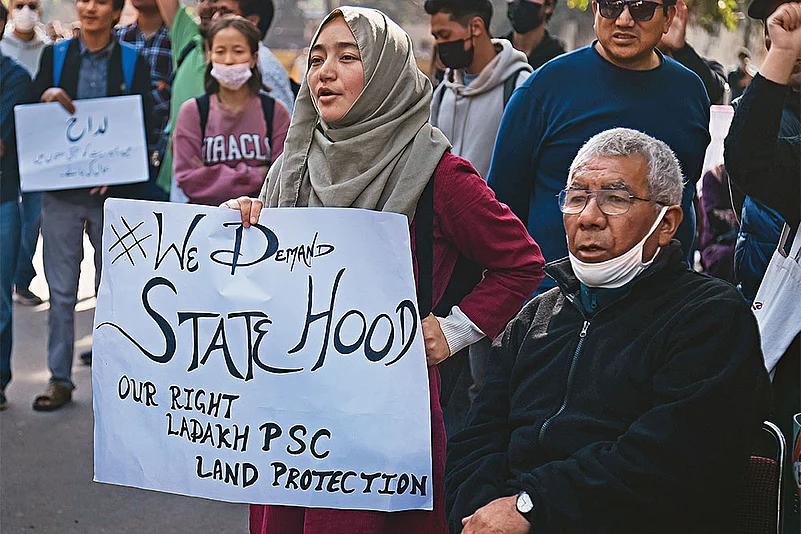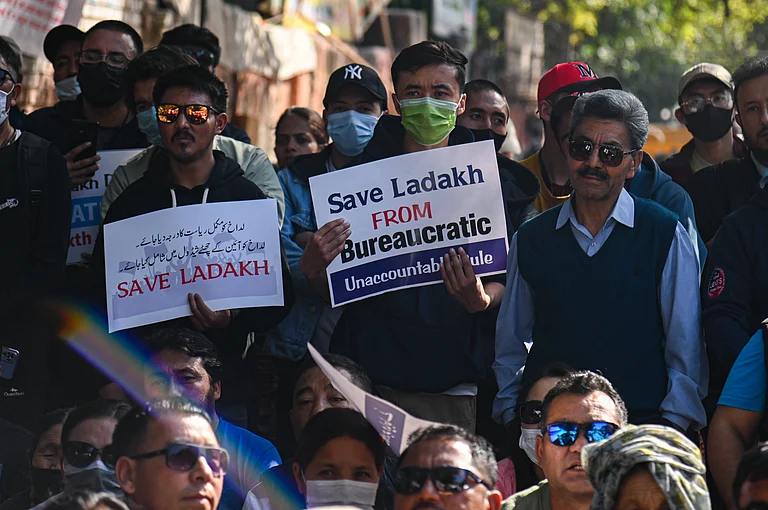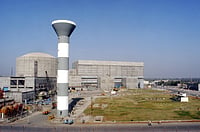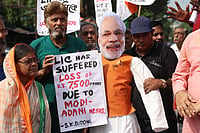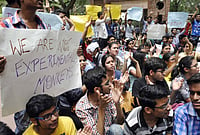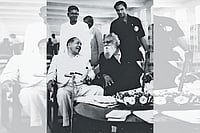
The September 24 protests in Ladakh—where four were killed and activist Sonam Wangchuk detained under the NSA—reflect deep anger over Delhi’s unfulfilled promises of autonomy after Article 370’s abrogation.
What began as a demand for statehood has turned into a symbol of shrinking democratic space, as dissent is criminalised and citizens are treated as subjects.
Ladakh’s experience of disempowerment—loss of land rights, weakened local institutions, and environmental neglect—underscores a broader national trajectory from political pluralism to authoritarian centralisation under the BJP.
When Ladakh erupted on September 24, 2025, with four protesters killed in police firing, dozens more seriously injured, curfew imposed across Leh, internet blackouts, and Sonam Wangchuk arrested under the National Security Act (NSA), many in the Indian establishment tried to reduce it to “law and order.” Wangchuk was flown to distant Jodhpur as a grave threat to national security. But Ladakh is not a local disturbance. Dissent is treated with contempt across the country by the ruling dispensation and institutions are subordinated to party interests.
Ballots are held, parliaments sit, courts function—but all of these have been hollowed out, bent to the will of one party and one leader.
The Arc of Authoritarianism
The Bharatiya Janata Party’s (BJP’s) ideological journey in power can be mapped in four stages: Congress-mukt Bharat, Opposition-mukt Bharat, Protest-mukt Bharat and now, Citizen-mukt Bharat.
In 2014, Narendra Modi’s campaign promised a Congress-mukt Bharat (Congress-free India). Framed as the end of dynastic corruption, it quickly morphed into delegitimising India’s oldest party as “anti-national.” Once the Congress was weakened, the target shifted to regional parties. Leaders of the Aam Aadmi Party, the Trinamool Congress, the Dravida Munnetra Kazhagam, the Nationalist Congress Party, and the Shiv Sena were hounded by the Enforcement Directorate and the Central Bureau of Investigation. State governments were toppled through engineered defections. Pluralism, the very foundation of Indian federalism, was hollowed out.
What was promised as autonomy was instead experienced as disenfranchisement. The very status that was supposed to empower Ladakhis ended up disempowering them, producing a sense of betrayal and fuelling today’s protests.
With parliamentary opposition reduced, the street became the next frontier. Peaceful citizens’ movements—from Shaheen Bagh against the Citizenship Amendment Act to the year-long farmers’ agitation—were vilified, disrupted by curfews and blackouts, and crushed with sedition charges and preventive detentions. Protest, the soul of democracy, was rebranded as anarchy.
Then came what we see today—the erasure of the citizen. When Ladakhis, demanding nothing more radical than statehood or Sixth Schedule safeguards within the Indian Constitution, are met with live ammunition and NSA detentions, the message is clear: the citizen has no standing. What remains is the obedient subject, loyal to nation and leader, stripped of an independent political voice.
Ladakh is not an aberration but the natural endpoint of this authoritarian trajectory.
The Ladakh Question
In August 2019, when Article 370 was abrogated and Ladakh was carved out as a separate Union Territory, the decision was greeted with jubilation in Leh. For decades, Ladakhis had complained that they were sidelined in the politics of Jammu and Kashmir, where power was concentrated in Srinagar. The promise of a Union Territory seemed to hold out the prospect of direct attention from Delhi, faster development, and freedom from what they saw as “Kashmiri dominance.”
But enthusiasm soon gave way to disillusionment. Unlike Jammu and Kashmir, Ladakh was denied its own legislature. Power was concentrated in the office of a centrally appointed Lieutenant Governor, while the two Hill Councils in Leh and Kargil found their authority systematically eroded. Matters central to Ladakhi identity—protection of land from outside acquisition, reservation in jobs for local youth, and environmental safeguards for its fragile high-altitude ecology—slipped out of local hands.
Examples abound. In 2021, the Ministry of Home Affairs extended several central land and property laws to Ladakh, including the Real Estate (Regulation and Development) Act, which opened the door for outsiders to purchase land—something Ladakhis had long resisted. Mining leases were granted to corporations without consulting local communities; one 2022 proposal for large-scale gypsum extraction sparked outrage over threats to pastures used by the Changpa nomads. Mega-infrastructure projects like the 14.2 km Zojila tunnel were pushed through without environmental impact assessments sensitive to local glaciers and water tables. Even government recruitment came under fire: jobs that Ladakhi youth expected to be reserved locally were increasingly filled through all-India competitions.
What was promised as autonomy was instead experienced as disenfranchisement. The very status that was supposed to empower Ladakhis ended up disempowering them, producing a sense of betrayal and fuelling today’s protests.
The Lame Logic of Securitisation
The Centre often justifies its tight control over Ladakh in the name of national security. After all, Ladakh borders both Pakistan and China, and since the Galwan clash of June 2020—where 20 Indian soldiers died—the Line of Actual Control (LAC) has become one of the most militarised frontiers in Asia.
But if national security is the goal, reliance on force and top-down decisions without local buy-in is a misplaced strategy. The people of Ladakh ought to feel proud and secure in their identity as Indian citizens—especially given their role as guardians of a sensitive border—not alienated.
Ladakh’s population is very small—about 274,289 in the 2011 Census, projected to be around 302,000 in 2024. By contrast, in response to the Galwan clash, over 68,000 Indian Army soldiers plus tanks, BMPs (infantry combat vehicles), artillery, and major logistical support were airlifted into eastern Ladakh by the Indian Air Force.
More recently, in March 2025, the government raised a permanent 72 Infantry Division to be stationed in eastern Ladakh, in addition to the existing 3rd Division guarding the region.
What becomes clear is the discrepancy: tens of thousands of troops, extensive infrastructure, and aggressive militarisation, serving a population of barely three hundred thousand.
True national security in a borderland demands more than installations; it demands the loyalty of the people, their sense of agency, their ability to shape their environment. When the democratic voice is shut down, when constitutional safeguards are ignored, when environmental concerns are steamrolled for roads and tunnels, alienation grows rather than mitigates threat.
For a region so critical to territorial integrity, force cannot substitute legitimacy. If New Delhi wants Ladakhis to feel belonging, not alienation, it will need institutional respect and responsive governance.
Comparative frontier zones show what works differently. In Tibet, under Chinese rule, the local population is often denied constitutional, religious, and cultural autonomy; the state depends heavily on deployment of troops and suppressive policies, generating cycles of unrest and distrust. In Gilgit-Baltistan (Pakistan), locals have historically lacked full constitutional integration with representative institutions; political arrangements are often peripheral and controlled by the federal government, producing frequent protests over resource extraction, land rights, and lack of voice.
India risks resembling those regimes if it treats Ladakh not as citizens but as strategic objects. For a region so critical to territorial integrity, for people at so high altitude, in such a fragile ecology, force cannot substitute legitimacy. If New Delhi wants Ladakhis to feel that belonging, not alienation, it will need institutional respect, constitutional safeguards, and responsive governance—not only troops, not only roads, not only orders from above.
Citizens Sans Security
No figure captures the contradictions of Ladakh better than Sonam Wangchuk. An engineer, innovator, and educator celebrated worldwide for his “ice stupas” and alternative models of schooling, Wangchuk has been honoured by international institutions and feted by the Indian state itself. Time magazine named him among the 100 most influential people in climate action; the Ramon Magsaysay Award jury praised his “grassroots innovation.” In short, Wangchuk is not an agitator on the margins but one of modern India’s most recognisable faces of constructive change.
And yet, his political demands have been anything but radical. He has consistently articulated three core aspirations: statehood for Ladakh, or at the very least a legislature with substantive powers; Sixth Schedule safeguards for land, jobs, and cultural identity, ensuring Ladakhis are not overwhelmed by external interests; ecologically sensitive development, critical in a region that is ground zero for glacial retreat and climate collapse.
All these are constitutional demands, pursued through Gandhian means—hunger strikes in sub-zero temperatures, non-violent marches across Leh, public appeals couched in the language of democracy and ecology. There has been no violence, no separatist slogan, no unconstitutional method.
Yet, the Centre has responded with the full arsenal of repression. His non-governmental organisation’s FCRA licence was revoked on flimsy pretexts; its funds were frozen. A campaign of discrediting followed, branding him as “anti-development”, “provoking unrest” and being insinuated as being in contact with a Pakistani. The final blow came when Wangchuk was jailed under the NSA—a preventive detention law meant for terrorists and saboteurs, not teachers and environmentalists.
The lesson is stark: in today’s India, the state’s wrath can fall not just on dissenters from the political opposition, but also on social reformers, teachers, scientists, or climate activists who merely articulate constitutional rights. Wangchuk’s incarceration sends a chilling signal: if even the most peaceful, patriotic, and globally respected voices can be branded a threat, then citizenship itself is stripped of security.
Ladakh’s struggle is not separatist. It is democratic—a plea for statehood, safeguards, and dignity. To answer such demands with bullets and NSA detentions is to reveal the fascist heart of the regime.
The people of Ladakh are raising the alarm today. The question is whether the rest of India will listen before it too becomes ‘citizens-mukt’.
(Views expressed are personal)
MORE FROM THIS ISSUE
Anand Teltumbde is an indian scholar, writer and human rights activist
This story appeared as 'A Glacial Meltdown', Outlook’s November 1 issue, which explored how the spirit of questioning, debate, and dissent—the lifeblood of true education—is being stifled in universities across the country, where conformity is prized over curiosity, protests are curtailed, and critical thinking is replaced by rote learning, raising urgent questions about the future of student agency, intellectual freedom, and democratic engagement.







